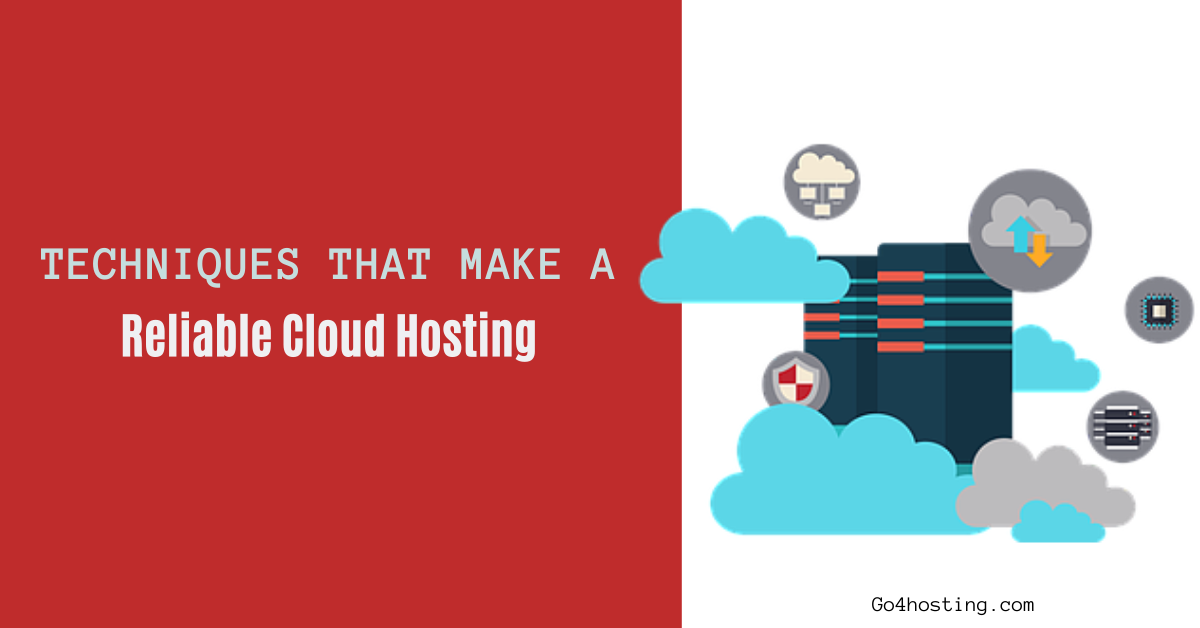Contents of Table
Ever since its inception, cloud hosting has been touted as the most reliable one with almost 100% uptime availability. There are many other performance machines like dedicated servers that deliver comparable statistics, but this hasn’t been achieved without the cost. In fact, what has made cloud computing so popular is that it provides quality service at almost ten times lesser price than the cheapest dedicated server.
You might be wondering what goes in the background that makes Cloud so reliable.
Well, read on to find out the techniques that make a reliable cloud hosting.
Data replication. Multiple servers got your back.
A typical physical server stores data to a fixed address and has a single point of failure. A small hardware glitch could trigger a series of reactions that can result in a complete data outage. It takes time to get your server back on track after a crash, the losses arriving in the meantime could be incalculable.
A cloud server stores data to not just one or two, but several bare metal servers distributed all across the globe. Rather than deploying a Windows or Linux operating system, cloud hosting runs a ‘hypervisor’ software that takes control of all the hardware lying underneath it.
This hypervisor software also powers the central servers that utilize the underpinning bare metal servers to create a pool of virtualized data rather than treating it as a collection of servers.
Under circumstances where one of the subordinate servers undergoes a crash, the hypervisor, with the central server, is able to withdraw another instance of the lost-data from other servers. Thus, this virtualized storage system seldom undergoes a data outage, and the website is up 24/7, 365 days a year.
Security and cloud hosting
Security in cloud hosting is still looked upon with suspicion; however, with the adoption of new tools and techniques these servers have developed their once-mourned weakness into a strength.
Passwords are one security credentials that most users are aware of. Cloud vendors make use of several other tools to keep wicked intentions at bay.
Firewall –
Firewalls analyse the incoming and outgoing data packets, identifying its source and destination. The more advanced ones, these days, check data for their integrity and identify risks associated with them.
Encryption –
The last and the most effective line of defence, encryption, encrypts the data with a key, without which the data is only an indecipherable set of random characters.
Physical security –
Though not before your eyes, virtualized servers, too, eventually dump data to a physical server. Cyber-attack is not the only mode of gaining unauthorized access; there is always some risk of illicit physical thefts, too. The security tools that safeguard data work in a network and not on individual drives isolated from the network. A stolen disk is, thus, no longer under the aegis of firewall and intrusion detection tools.
Certified data centers employ most common security-measures like fingerprint locks and premise monitoring. Some even have armed guards. The infrastructure is well secured against all possible intrusions.
Erasure coding aims at regaining data center that becomes corrupt at one point by reconstructing from instances stored elsewhere. The data, for erasure coding, is first fragmented, then expanded, and finally stored with redundant piece across various servers. Thus, a physical disk never stores the complete instance, ensuring even if the data lands in wrong hands, it cannot be extracted until all the parts are reconstructed.
Even if one of the servers undergo a crash or a failure, the remaining disks have sufficient erasure codes to recreate the original data set.
Say, for example:
A value equal to 17 is to be stored with erasure coding. Imagine three servers where the codes are to be reflected.
The digit 1 is stored as ‘x’, and 7 as ‘y’.
A set of three functions are created ascertaining the values 1 and 7.
Say the functions are: x + y = 8; x – y = – 6; 7x – y = 0.
Each of these function is then stored in server 1, 2, and 3, respectively.
Now, since there are only two unknowns viz. x and y, the number i.e. 17, can be determined using any 2 of the equations above.
Hence, if any of the three servers undergo a failure, the remaining two have enough erasure codes to reconstitute the original data set – in this case ‘17’.
A single server as an entity, however, is not sufficient enough to construct the number.
Redundancies – power & network
There are ‘N’ hardware associated with a network and under circumstances of either one of them failing, the entire network can get disrupted. Cloud providers, on account of their industry compliance and certification, keep numerous networks on standby. So goes for power; a reliable vendor will always have multiple spare feeds to power their data center. The backup power brings the system online in no time and is continually running, much like a UPS. It is only in case of a power outage that the backup power is utilized.
Accessibility and transmission speed
Because virtualized storage is accessed via the internet, the same is available all round-the-clock, 365 days a year. Conventional servers tie you down to a particular location and working anytime is also not always the case.
Cloud hosting lays emphasis on the internet for its access, an attribute that is looked upon as a downside. The quality of the internet can ruin cloud experience, no matter how seamless a service the provider is delivering. Poor internet often translates to painfully slow data transmission.
The lesser the data, the less will be the page load-time. Conceptualizing this philosophy, clouds store only one instance of the data-set that has multiple occurrences. So, the same data is pulled out over and over again every time user requests access to that repeated data. The files are then recombined to restore the original state.
Choose what fits you.
There are absolutely no restrictions as to what can and cannot be used with these servers. So, whether you want to set up a cheap Linux cloud, or a more intuitive one based on Windows, the authority lies solely to you. While everything that goes behind becomes the provider’s concern, you focus more on leveraging Cloud to your advantage.
Upshot
The virtualized technology may have had a few anomalies during its infancy, it has experienced tangible improvements over the past few years. Organizations that were once a fan of dedicated servers have scrapped off their orthodox idea and have migrated to cloud hosting.









